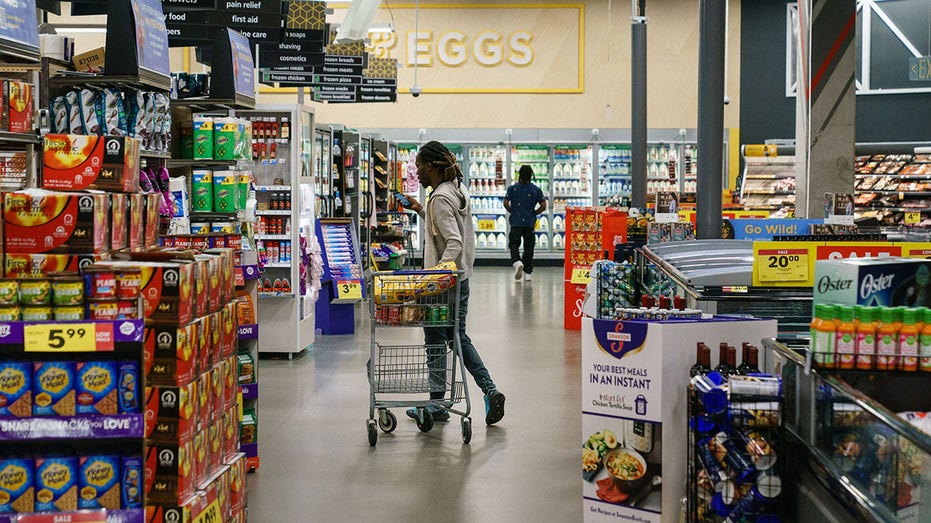Inflation eased in March to 5%, but core prices remain stubbornly high
Economists expected March CPI to rise by 0.2%
The Fed risks 'overshooting' its inflation, rate hike goals: Diane Swonk
KPMG chief economist Diane Swonk says it's important to remember rapid rate hikes can exacerbate market fragility.
Inflation showed welcome signs of cooling in March as the cost of gasoline declined, but core prices pointed to strong underlying price pressures that are still bubbling beneath the surface.
The Labor Department said Wednesday that the consumer price index, a broad measure of the price for everyday goods including gasoline, groceries and rents, rose 0.1% in March from the previous month, down from 0.4% in February. Prices climbed 5% on an annual basis, down sharply from February's 6% increase and the smallest rise in nearly two years.
Those figures were both lower than forecasts by Refinitiv economists.
Still, inflation remains about three times higher than the pre-pandemic average, underscoring the persistent financial burden placed on millions of U.S. households by high prices.
Other parts of the report also pointed to a slow retreat for inflation, a worrisome sign for the Federal Reserve. Core prices, which exclude the more volatile measurements of food and energy, climbed 0.4%, or 5.6% annually. That is up slightly from February's 5.5% increase and marks the first acceleration in five months.
HOW THE BANKING CRISIS COULD HAMMER SMALL BUSINESSES
The report is the last before the Fed's next policy-setting meeting on May 2-3 and will have major implications for the U.S. central bank, which is tightening monetary policy at the fastest rate in decades as it tries to crush out-of-control inflation.
"Headline inflation cooled in March, but it’s not time to celebrate just yet," said John Leer, the chief economist at Morning Consult. "Topline inflation was driven lower primarily by falling energy prices, which tend to be volatile from month to month. Core inflation remains stickier and more persistent than the Fed would like, and combined with the strength of the March jobs report, there's a growing case for the Fed to raise rates yet again at its next meeting."
Officials have already approved nine straight rate increases, lifting the federal funds rate to a range of 4.75% to 5%, the highest since before the 2008 financial crisis. Policymakers are now trying to assess the effect that tighter policy is having on the economy – and determine how much more they need to do to fight inflation.
JAMIE DIMON WARNS BANKING CRISIS HAS RAISED ODDS OF RECESSION

Prices are displayed in a grocery store on Feb. 1, 2023, in New York City. (Leonardo Munoz/VIEWpress / Getty Images)
Markets expect policymakers to approve another quarter-percentage point hike at the conclusion of their meeting next month, despite upheaval in the banking system and concerns over a slowing economy.
Scorching-hot inflation has created severe financial pressures for most U.S. households, which are forced to pay more for everyday necessities like food and rent. The burden is disproportionately borne by low-income Americans, whose already-stretched paychecks are heavily affected by price fluctuations.
Consumers continued to see some reprieve in March in the form of lower energy costs, which fell 3.5% over the course of the month and are down 6.4% compared to the same time last year. The big decline is largely because the figure is now compared with March 2022, when energy prices skyrocketed following Russia's invasion of Ukraine.

Shoppers in a Kroger supermarket on Oct. 14, 2022, in Atlanta. (Elijah Nouvelage/AFP via Getty Images / Getty Images)
The cost of groceries fell 0.3% in March, although the 12-month increase remains at 8.4%. Despite the decrease, consumers continued to pay more for items like cereal, rice, bread, fish and seafood.
CLICK HERE TO READ MORE ON FOX BUSINESS
Other price gains proved persistent and stubbornly high in March: Shelter costs, which account for about 40% of the core inflation increase, rose 0.6% for the month and are up 8.2% over the past year. It was "by far" the largest contributor to the monthly increase, the Labor Department said in the report.
